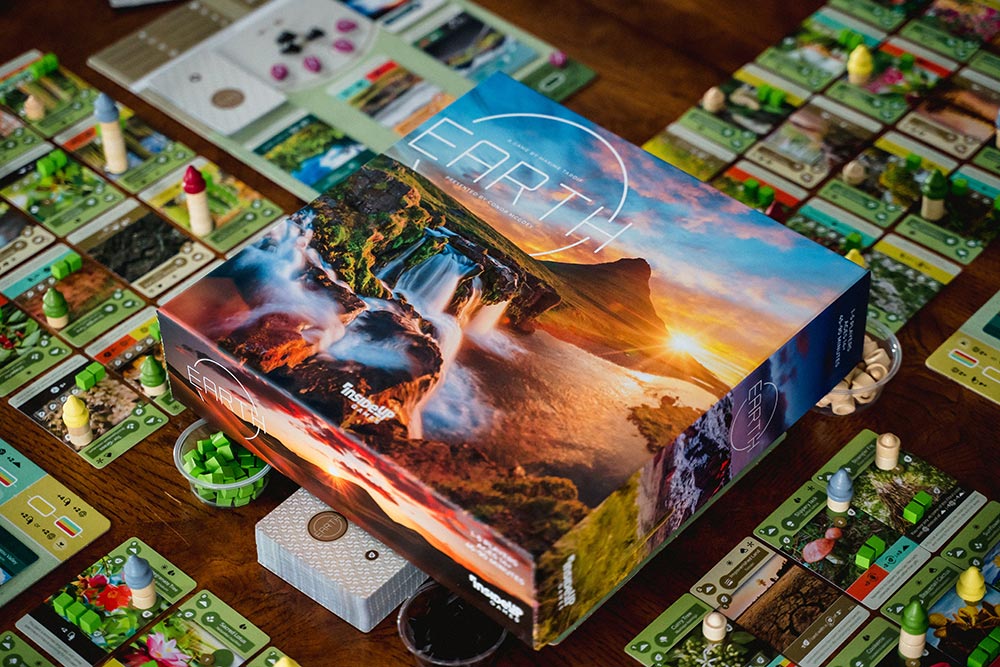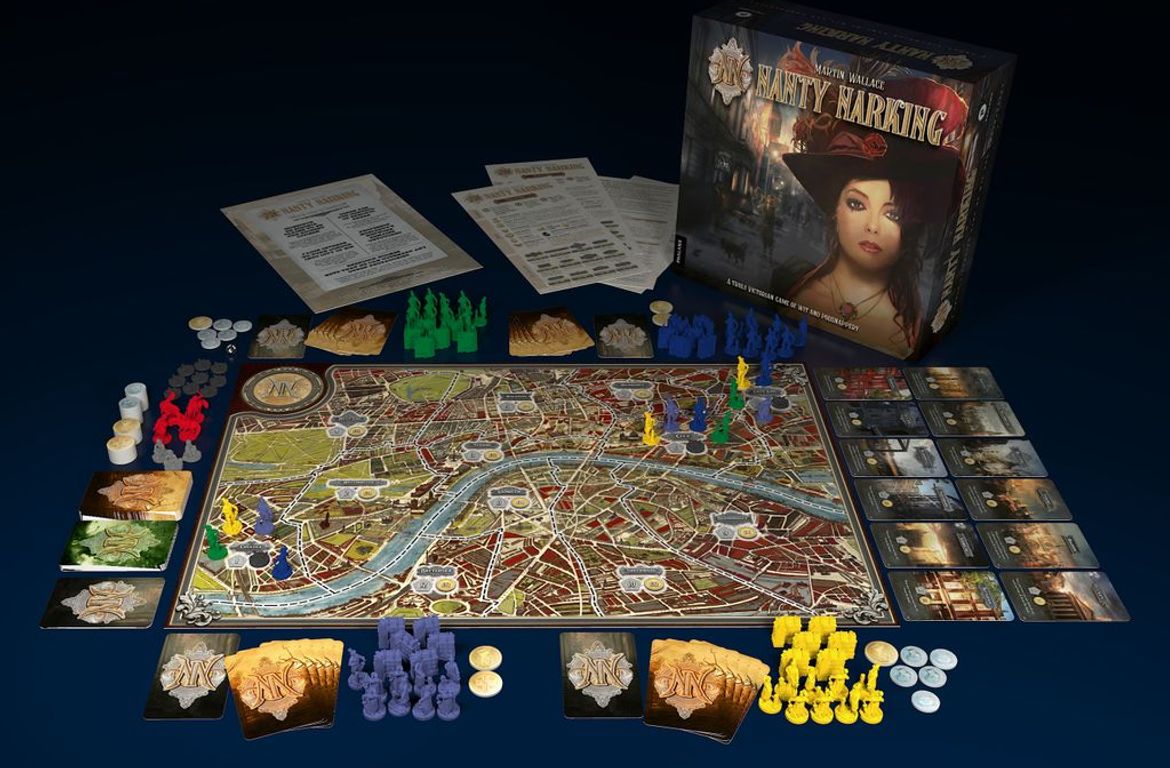
Earth: Istražite Prirodna Čuda planete Zemlje kroz Društvenu Igru
U svijetu društvenih igara, Earth se ističe kao igra koja kombinira ekološku svjesnost, strategiju i prekrasnu umjetnost. Ako ste ljubitelj
Hello, I’m Benoit Turpin, co-designer of The A.R.T. Project with Florian Sirieix, with this game being illustrated by Vincent Dutrait and published by Lumberjacks Studio, with The Op releasing the game in the United States and Hachette Boardgames UK carrying it in the UK.
This is an interview style diary for our next work, which will be released at SPIEL ’23.
Q: Can you please introduce “the other” in a few words?
Florian: Benoit was a history teacher. He loved teaching and being with the kids. Grading papers and dealing with school administrators — not so much.
Thanks to the success of his game Welcome To…, he was able to transition full-time into the world of board games as a designer, project manager with Blue Cocker Games, and president of the SAJ (Union of French Game Designers). In short, he now wears many hats on his big head.
Since then, he has surrounded himself with the best designers to create new games: Prehistories, Number Drop, Stomp the Plank…
Benoit: Florian was a teacher in a special education program. He loved going on bike rides and being there for the students who needed it the most.
Thanks to the success of his games After Us and Stomp the Plank, he was finally able to join his favorite co-author full-time in the world of games. Designer, designer, designer — he already has too many ideas for his big head. That’s why he needed someone with experience to help him create new games like The A.R.T. Project…
Q: Benoit, what is it like working with Florian?
Benoit: Honestly, it’s great. We complement each other quite well in terms of game design. Whether it’s a project from me or him, we always manage to move the games forward efficiently (most of the time). We get along well, and we are in sync concerning our schedules and work rhythm (which helps a lot).
Most importantly, we understand each other because Flo not only knows what I’m going to say here (for his next question), but I already know he stopped listening to me because it gave him an idea…
Q: Florian, does knowing exactly what Benoit is going to say in the previous question help?
Florian: Sorry, I wasn’t listening; I had an idea…
On a more serious note, how did you come up with the idea for this “co-operative where communication is essential” mechanism?
Florian: I wanted to work on a combination of mechanisms that, to my knowledge, didn’t exist: co-operative drafting. To achieve this, I introduced a constraint for players: managing resources together.
The game quickly evolved from “Dungeon Draft” (in which we distribute weapon cards to fight monsters) to “Egyptian Tales” (in which we distribute missions to plunder the tombs of pharaohs). It was at this point that Benoit joined me on the game. We developed it, always keeping the strength of the game: co-operative resource management. Benoit came up with the idea and development of alternative maps. (Surprisingly, the base map, Egypt, became Japan.) In the end, we have The A.R.T. Project. In the end, there is no more drafting — but I’m keeping the idea for a future game, maybe?
Benoit: When Flo had me test “Dungeon Draft”, then “Egyptian Tales”, I already liked the concept. This idea of co-operative resource management with central communication was working well.
However, it lacked embodiment, life on the board. That’s why the first thing we did together was move the battles from the cards to the board, with enemies embodied on it. Without changing the essence of the game, it radically changed the players’ experience by making it more immersive. After that, I did a lot of development to bring that famous “replayability” by creating these alternative adventures that make players play differently, focusing on small mechanical twists.
Q: Was a strong theme essential for a game like this?
Benoit: No, a theme is rarely essential in our work, especially in Europe. The heart of the game is mechanical: it’s a co-operative resource management game in which communication is essential. If we had used a theme like goblins in a mine trying to recover treasures from their dwarf enemies, it would have worked just as well. (Note: That was Flo’s favorite theme for his early prototypes.)
But a theme is important in several ways, even in a “Eurogame”. First, during the game design phase, it brings a lot of ideas. Going from an “Indiana Jones” theme to a “The A-Team” theme allowed us to think in different directions in terms of combat, movement, etc.
Then during the publishing phase, having a logical and coherent theme also makes it easier to explain the rules, more thematically, provided that we have successfully merged mechanisms and theme when writing the rules.
Finally, from a “marketing” point of view, it’s essential to have a compelling theme supported by stunning illustrations (by Vincent Dutrait) because it creates a universe in which players can immerse themselves, setting it apart from the rest of the gaming production.
So, yes and no…
Q: Do you remember a significant moment during the development when everything fell into place?
Benoit: It was when Flo didn’t listen to me…
Actually, there were probably three key moments in the game’s history: the creation of the concept by Florian, the rethinking and “putting it on the board” when I joined the project, and a development episode with Antoine, our publisher.
During a work session, we realized that he wasn’t playing with the same rules as we were regarding a specific aspect of the turn order. Since this difference changed the accessibility of the game quite significantly, we spent a lot of time testing all the implications of this change, and in the end, we validated it because it made the game more dynamic and easier to play, without taking away from the core of the game. Sometimes misinterpretations can lead to good surprises.
Q: Finally, let’s get wild. What would be the next step for The A.R.T. Project if you had to imagine it today?
Florian: No idea. To venture into the next step of a game, I like to have feedback from players first, knowing what they liked and what was missing from their gaming experience. I think we could easily develop new boards, but that might not be what players are looking for the most. To be continued…
Benoit: The unique thing about The A.R.T. Project is that we have already extensively explored the game design space by taking the time to create six different adventures. The idea was to be generous in the gaming proposal and to provide different sensations within the same system, so it seems difficult to envision a sequel to The A.R.T. Project as is, at least from a mechanical point of view.
However, nothing stops us from taking the story further, maybe with vengeance from the White Hand, a specific episode of the Art Rescue Team, like a “close-up” with a completely different mechanical system.
And now Flo isn’t listening to me anymore. See you in a couple of years…
Florian Sirieix (l) and Benoit Turpin

U svijetu društvenih igara, Earth se ističe kao igra koja kombinira ekološku svjesnost, strategiju i prekrasnu umjetnost. Ako ste ljubitelj

U svijetu društvenih igara, rijetko koja igra uspijeva obuhvatiti bogatstvo povijesti, strategije i priče poput Nanty Narkinga. Ova igra, smještena